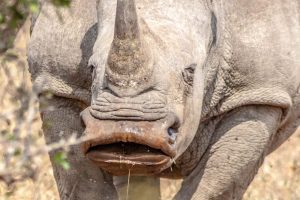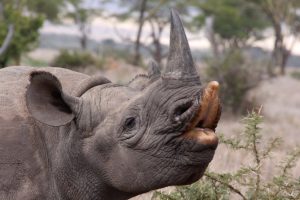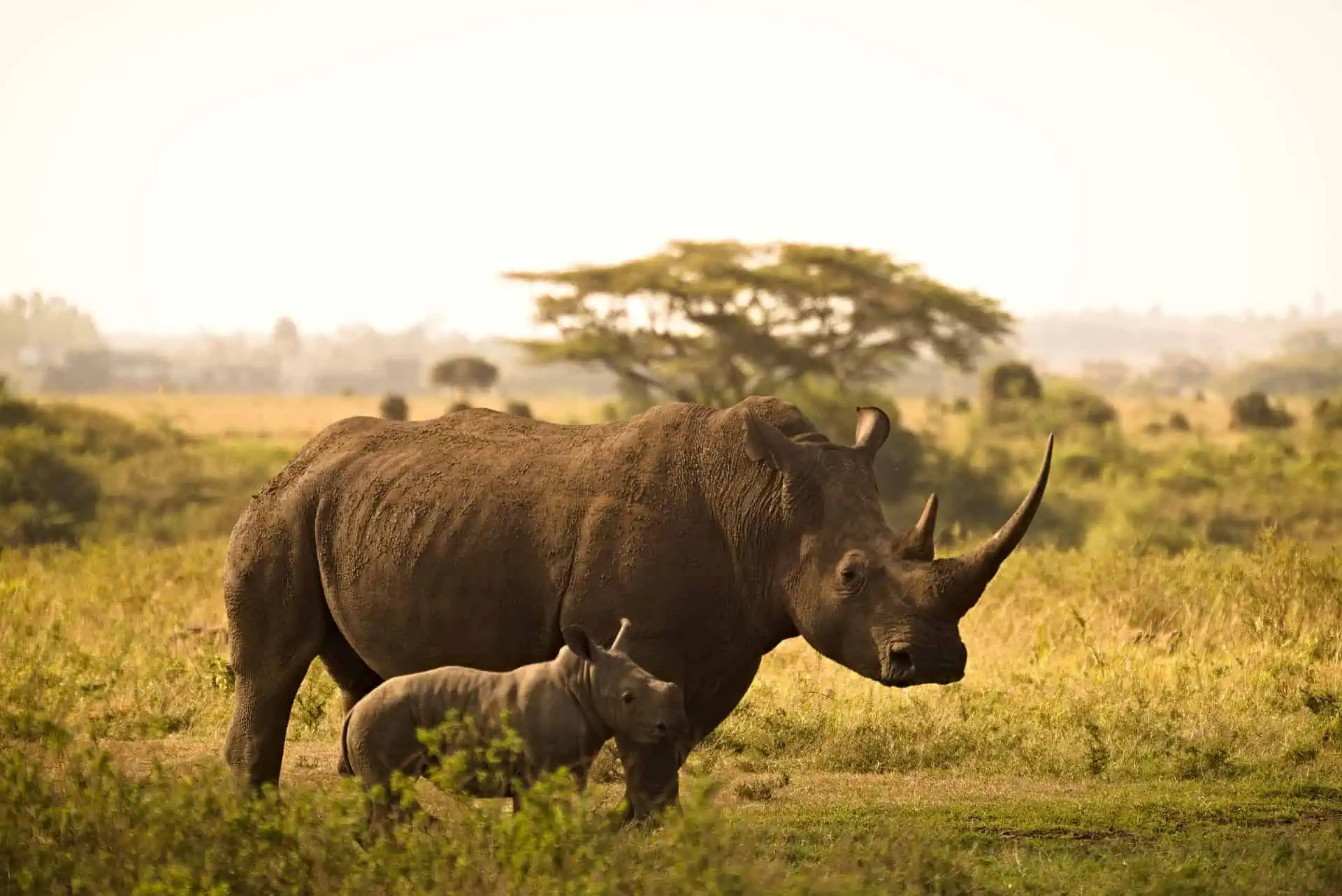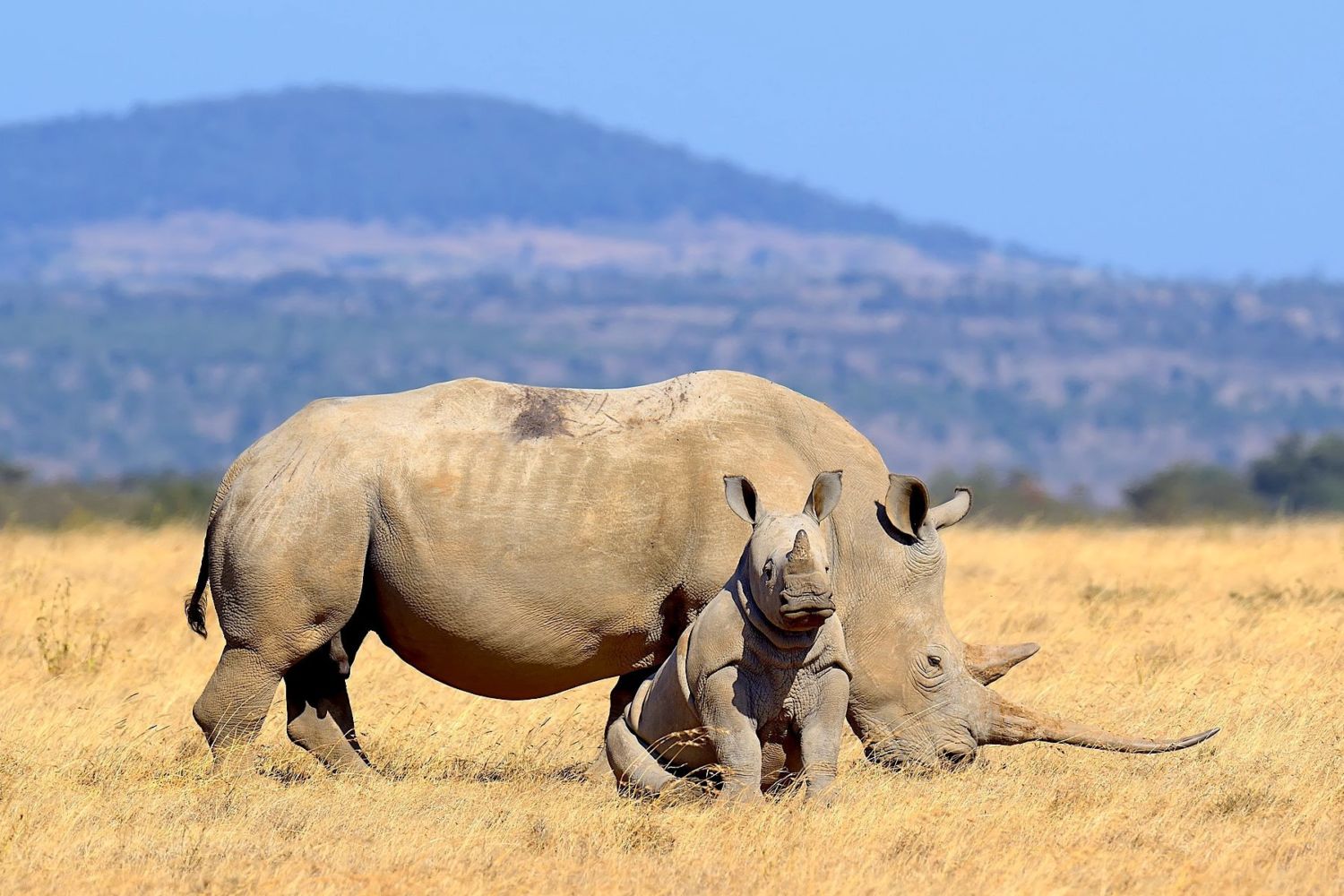Understanding the Differences Between White and Black Rhinos.
Differences Between White and Black Rhino; Rhinos have amazed wildlife enthusiasts since time began with their striking looks and strength. But while “rhino” may be synonymous with a single, armored giant in most people’s minds, there are actually five different species of rhino worldwide, with the Black and White Rhinos being the two iconic species found in Africa. While they may appear fairly similar, White and Black Rhinos are indeed very different animals, not just in their appearance but also in their behavior, diet, and habitat. This guide will help you spot the differences between these remarkable animals on your next safari.
Physical Characteristics: Size and Shape.
The size and shape of White and Black Rhinos are radically different: the larger and more bulky White Rhino has a wide, square-shaped mouth perfect for grazing, while the Black Rhino is much smaller, sleeker, with the pointed prehensile lip of a browser of leaves and branches. Such adaptations have an echo in their specific dietary needs and respective lifestyles in the wild.
White Rhino (Ceratotherium simum).

The White Rhino is bigger compared to the others, most of which have weights between 1,800 and 2,500 kilograms and can weigh up to 4,000–5,500 pounds, standing at a shoulder height of 6 feet or over. The typical rhinoceros has a wide and barrel-shaped body with a characteristic flat, broad mouth for grazing.
Broad Mouth: The wide, square-shaped lip of the White Rhino perfectly suits grazing on grasses, hence earning this species the name “square-lipped rhino.”
Size Advantage: White Rhinos are the second-largest land mammal after the elephant, and they look notably more robust than their Black Rhino counterparts.
Black Rhino (Diceros bicornis).

Smaller and more agile, Black Rhinos weigh between 900 and 1,400 kilograms (2,000–3,000 pounds) and stand about 5 feet tall at the shoulder.
Hooked Lip: Black Rhinos have a pointed, prehensile upper lip, designed for grasping leaves, branches, and twigs.
Sleeker body: The Black Rhino, being about 1-2 feet shorter in body length, has a sleeker body shape compared to that of the White Rhino.
Dietary differences and mouth shape.
These differences in physical adaptation regarding the shape of the mouth predispose some marked dietary differences.
White Rhino: Being browsers, White Rhinos feed on short grasses while moving with their heads down. As such, they have wide mouths for taking in great swaths of grass and can sustain their large body mass through nutrient-rich grazing.
Black Rhino: Black Rhinos are browsers. With their lips, they masterfully acquire the leaves, shoots, and branches from bushes and shrubs of small trees. This allows them to have more variability in the intake of food and thus sustain life where there is adequate availability of bushes and shrubs.
Behavioral Traits and Temperament.
White Rhino: The White Rhinos are less aggressive and more social compared to Black Rhinos, and are often in companies, especially females with calves. While not naturally aggressive, the White Rhinos will react if they feel threatened. Because of their poor eyesight, they are quite quick up a charge to perceived threats but not as territorial as Black Rhinos.
Black Rhino: Less social and even more aggressive, Black Rhinos are extremely territorial and defensive. Black Rhinos often live alone, and they charge quickly once they sense danger. Their greater agility allows them to navigate denser vegetation, making them harder to spot in the wild.
Habitat Preferences.
White Rhino: White Rhinos prefer grasslands and savannas. In essence, they are well adapted to open environments where there is sufficient grass to feed on. They have large sizes that need regular feeding; and this habitat offers them the grazing materials.
Black Rhino: Black Rhinos prefer woodlands with dense shrubs and bushy vegetation. The former are less restrictive in terms of habitat, as they set their sights on savannas, scrublands, and even dry forests. Their diets, which consist of leaves, branches, and fruit, facilitate their survival in locations that would not be suitable for White Rhinos due to food insufficiency.

Conservation Status and Threats.
White Rhino: Once thought to be on the brink of extinction, White Rhinos are currently listed as “Near Threatened.” Through conservation, their numbers have increased, mainly in Southern Africa; however, there is a subspecies called Northern White Rhinos that is critically endangered, because there are only a handful of them that still exist. Their primary threat is poaching due to high demand for rhino horns on the black market.
Black Rhino: The Black Rhino populations are only a fraction of those of the White Rhinos. Continuous poaching, habitat loss, and human encroachment have always kept it below the White Rhinos in number. The conservationists made big efforts to save them and increase their numbers, but it is an uphill task.
Why Are They Called ‘Black’ and ‘White’?
Curiously, the terms “White” and “Black” don’t refer to the actual color of these rhinos. In fact, the name White Rhino is believed to have come from the Dutch word “wijde,” meaning “wide” in reference to its broad mouth. Early English settlers likely heard this as “white.” Black Rhinos were subsequently named as its counterpart, although both species are actually grayish in color.
On Safari: Spotting the Differences.
When viewing these rhinos on a safari, look out for the following:
Shape of mouth: Flat-a White Rhino; pointed lip-Black Rhino.
Size: White Rhinos are much larger and heavier.
Social behavior: White Rhinos are most likely in groups while the Black ones tend to be more solitudinous.
Habitat: Open grasslands host White Rhinos, and Black Rhinos prefer bushy and dense areas.

Our Best Safaris to See Rhinos in Africa.
22 Days Best of Uganda Wilderness Adventure
18 Day Exploring Uganda Safari
15 Day Gorillas-Chimps and Big Five Safari
14 Days Uganda and Kenya Wildlife Safari
14 Day Uganda-Rwanda Wildlife and Primates Safari
10 Day Highlights of Uganda Safari
9 Day Kenya Wild Safari Adventure
8 Day Gorillas-Chimps and Big Five Experience
8 Day Best of Tanzania Wildlife Safari
7 Day Kenya Wildlife Safari Tour
3 Day Best of Akagera National Park
3 Day Ngorongoro Magical Adventure
Remarks on Differences Between White and Black Rhino.
Both Black and White Rhinos are natural wonders, each well adapted to the environment and way of life. They constitute an important link in their respective ecosystems, conservation of which is very vital to prevent these magnificently beautiful animals from extinction. Knowing the various differences between these increases our appreciation and brings to the fore the need for continued conservation.
When on your safari drive, make sure to look for these amazing creatures and note how the particular adaptations control their behaviors and the animals’ relationship with the landscape. Every rhino encounter-whether black or white-acts as a poignant reminder of the strength and beauty of African wildlife.











